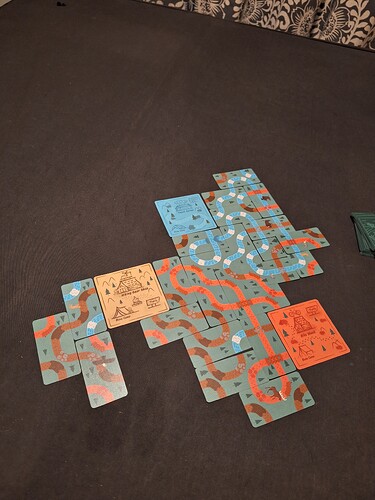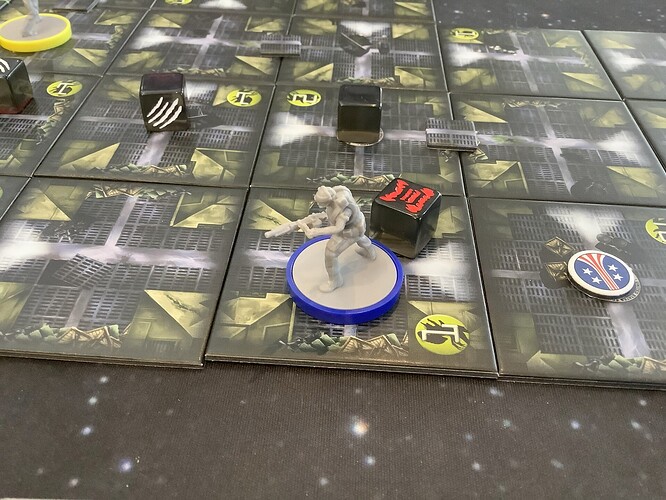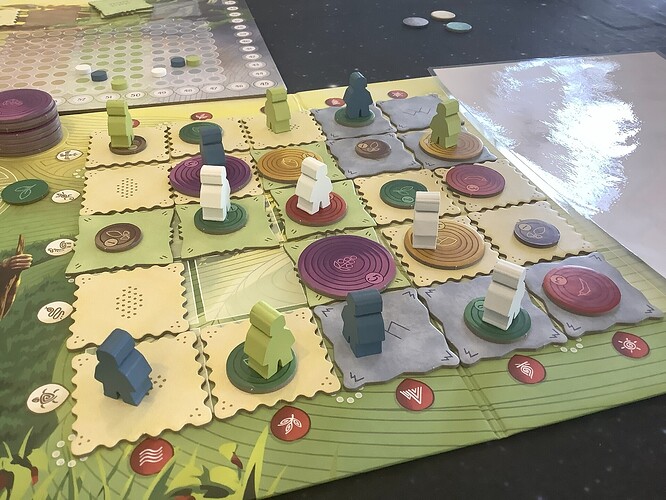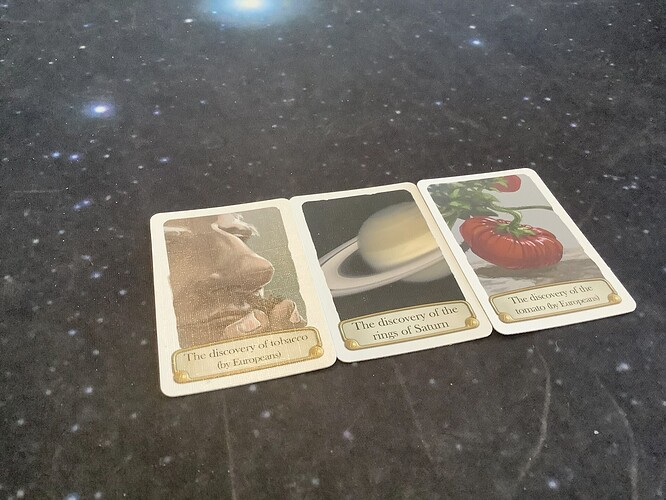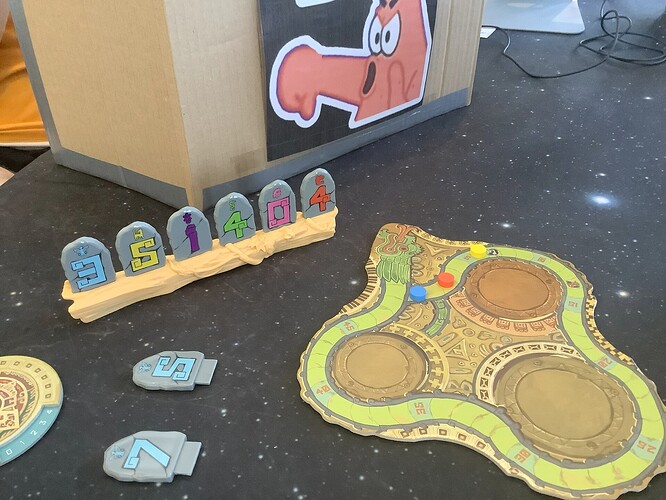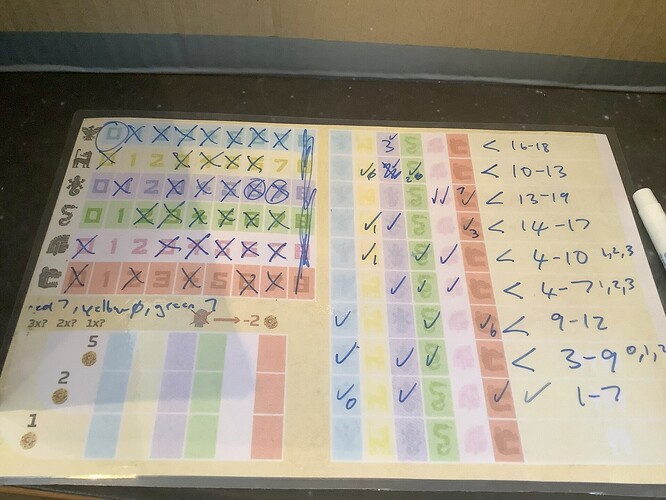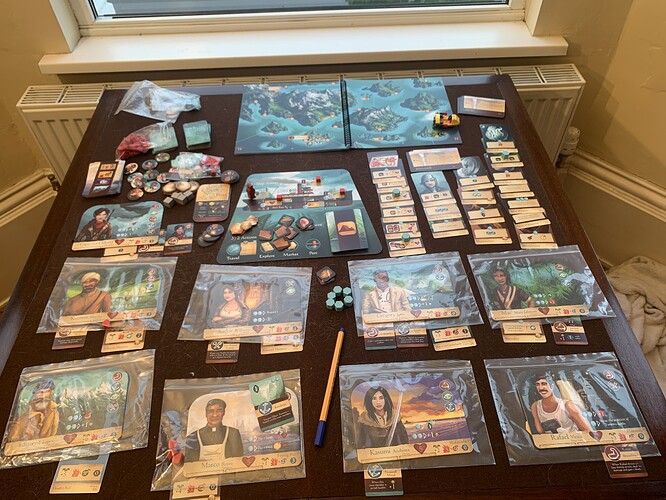So I finished the Voidfall tutorial last night.
As previously mentioned, I took me hours to sort and hours to set up. And then hours to read the rules for just the basics.
This game has a rulebook, a scenario book, a glossary book (much needed), a 4-page iconography cheat-sheet and 5 page component-sorting/insert instructions. So far I think the accompanying library does an adequate job for a box of this size. (I chose the big box with the plastic ships because I wanted the insert more than the plastic ships but they do add nicely to the table presence)
I have not previously played a big 4x boardgame (my partner already complains his favorite X–ploration–is not present enough, even though he has only watched me do a couple of turns and observed the game on the table). I have played 4x computer games though. Civlization, Master of Orion and Stellaris (a bit, never finished a game) being the major ones that come to my mind. Maybe Slipways.
Voidfall feels like that. But for all the overhead at the beginning, it seems to be a pretty compact version or maybe it’s just the tutorial that makes it feel this way (in that case it is an extremely well designed introductory game).
What drew me to Voidfall over Eclipse or TI4 was that it offers a cooperative mode and despite my misgivings with some of David Turzcis solo-modes, having a 4x solomode designed by him within a game of his own seemed tempting. And also that Ian O’Toole cover.
So… how does it play?
(I have yet to learn the coop rules)
- Choose a scenario that tells you how the board is set up what houses are available, which events will happen. I have not looked closer at scenarios. And an app in the making that will likely streamline that part and possibly provide more content.
- 3 eras with multiple rounds each.
- In competitive after 3 eras the player with the most influence wins.
- Each era has 3 phases: setup, turns and teardown. The 2 book-keeping phases are pretty quick. Setup refreshes some stuff and gives you an event that tells you how this era plays and gives you a couple of scoring conditions. Teardown has the Void attack, you pay upkeep for your “stuff” and you get to score some influence depending on events and your personal agendas.
- 1-4 players play in turns with I think a parallel “planning” phase at the start of each turn.
So a turn…
- During planning you select one of your 8(?) focus cards. There are some standard cards and some houses get some variants. Events sometimes make you discard certain focus cards so not all actions are available in each era which feels like a cool choice directing the flow of the “story” of each scenario. F.e. in the tutorial the first era was focused on building up your existing sectors and getting some resources.
- During planning you can also select one of your unplayed agenda cards that matches the focus you choose (4 types of agendas each matching 2 focus cards)
- On your turn you play the card(s) you selected.
- A focus card provides 3 different actions, 2 of which you play (unless you expend a trade token for all 3).
- Many actions have costs you pay. Everyone has a nice resource board with lots of little turning wheels: 2 for each resource, one that tells you how much production you have, one for your current stockpile of food, energy, Materials, credits and knowledge (I like this component, seems a good choice). Sometimes you also pay costs with ships.
- some typical actions include:
- research a tech or advanced tech (limited choices based on scenario and houses present),
- producing resources,
- moving or creating ships,
- removing void tokens from your populations or your board (void influence mostly blocks stuff from being used or population from being increased)
- increasing population (population is a multiplier for local guilds in a sector, see next point)
- building guilds (for resource production)
- advance 1 of your 3 civ tracks for various rewards (and advanced tech slots),
- obtain agenda cards for more scoring opportunities and bonus actions,
- obtain trade tokens for bonus actions or upkeep savings
- build shipyards or defensive installations
- invade new sectors. Combat is non-random. Mostly more is better. There is obviously some helpful tech around.
- Agenda cards seem to have fixed actions per type and give you typical scoring opportunities. You can only have 4 of them in play and only 1 of each type. You get a starting agenda that fits with your house.
- there is a minor bit of book-keeping at the end of your turn–there are some upper limits to certain stuff you can have.
- Each era event tells you how many turns should be played. In the tutorial era 1 had 3 turns, era 2 had 4 and era 3 had 5. So it is likely not all focus cards get played and I had to make some interesting choices especially in era 3 to figure out the maximum influence I could extract. You need to have a strategy for the whole era and then again for each turn. It felt interesting even in the tutorial mode.
And that’s more or less the competitive mode. At least from the pure proceedings stand-point. How this comes together with multiplayer: I hope to find out. But I am more likely to be playing the cooperative or solo-version.
As for teaching: I think there need to me multiple copies of the iconography thing and possibly the glossary (which is really good and quite complete!). I think the teach can be done much faster than the actual learning. Which is why I tried to write this up here. A lot of the complications come from nobody at the table knowing certain basic concepts. Setup is a complex part but one that can be done before the teach. Once stuff is on the table, complexity is a bit reduced.
